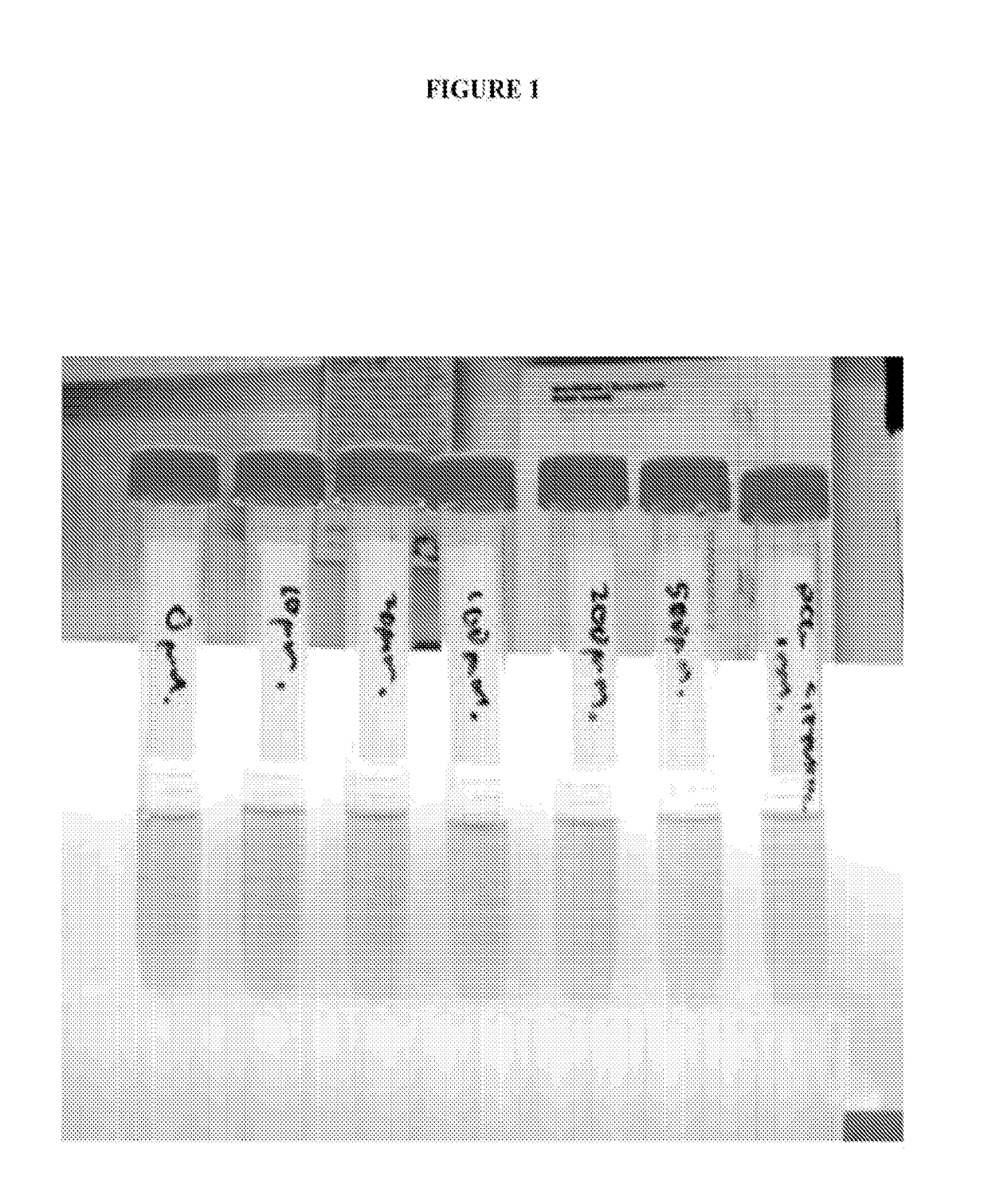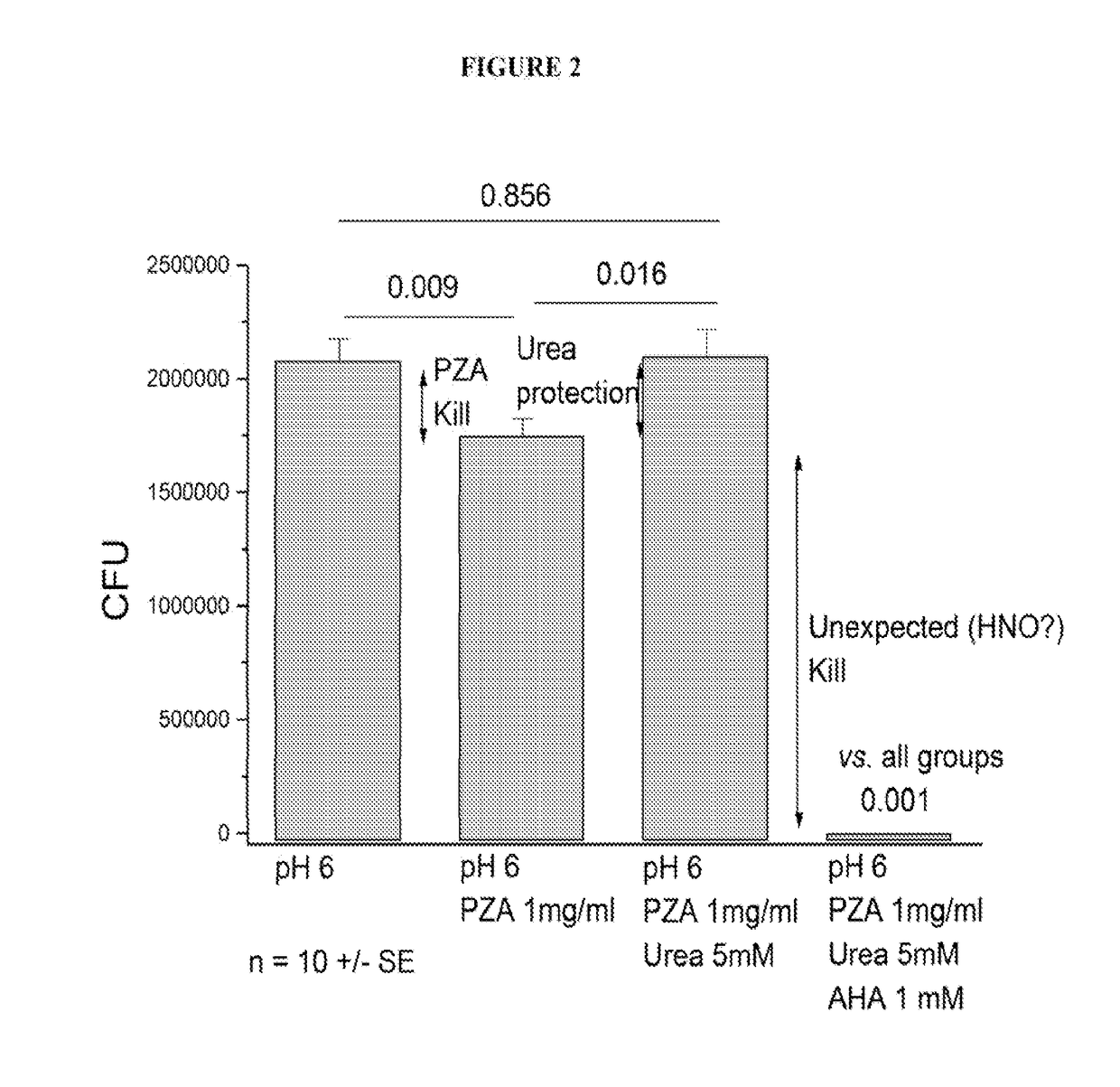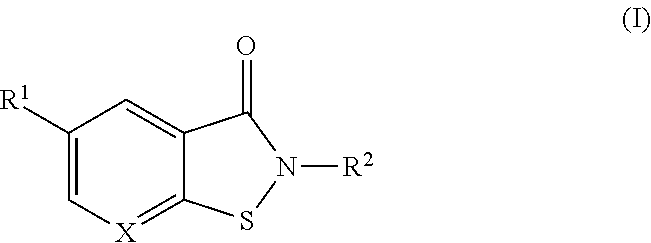Booster drug therapy for mycobacterium infections
a mycobacterium and drug technology, applied in the field of booster drug therapy for mycobacterium infections, can solve the problems of inability to direct measure the i>m. tuberculosis /i>infection in humans, the inability to detect m. tuberculosis infection in humans, and the inability to carry out direct measurement tools, etc., to improve the prognosis of large numbers of patients, inhibit the latent mycobacterium infection, and the effect o
- Summary
- Abstract
- Description
- Claims
- Application Information
AI Technical Summary
Benefits of technology
Problems solved by technology
Method used
Image
Examples
example 1
Acetohydroxamic Acid Inhibits Mycobacterial Urease
[0090]In our assessment of the effect of acetohydroxamic acid upon mycobacteria, we determined that acetohydroxamic acid inhibited urease activity in a whole-cell assay of mycobacteria with an IC50 of approximately 100 to 200 μM (FIG. 1). We attributed the pyrazinamide boosting effect of acetohydroxamic acid to its ability to inhibit mycobacterial urease. FIG. 1 shows the incubation of M. bovis BCG in urease medium with increasing concentrations of acetohydroxamic acid. Inhibition of urease is evidenced by decreased red coloration. It is noted that the formation of acetohydroxamic acid resulted in an unexpected enhanced antimicrobial activity.
example 2
AHA is a PZA Booster and an Anti-Mycobacterial Agent
[0091]We employed a time-kill curve method to determine the bactericidal activity of PZA and a combination of PZA and acetohydroxamic acid (AHA) against M. tuberculosis. We cultured M. tuberculosis on solid media at pH6. CFU values were determined for samples treated with pyrazinamide (PZA), urea at a typical body fluid concentration and acetohydroxamic acid. As shown in FIG. 2, we determined that the kill by PZA alone was modest, and that urea protected against the PZA kill as expected. Surprisingly, we determined that AHA not only prevented urea protection, it also substantially increased the kill rate. These results demonstrate activation of AHA by TB enzymes to produce nitroxyl (HNO), a very damaging species. Consequently, our results provide that AHA acts not only as a PZA booster, but also as an anti-mycobacterial agent, in some instances, in a synergistic manner with the traditional anti-mycobacterial agent used.
PUM
| Property | Measurement | Unit |
|---|---|---|
| pH | aaaaa | aaaaa |
| mean particle diameter | aaaaa | aaaaa |
| size | aaaaa | aaaaa |
Abstract
Description
Claims
Application Information
 Login to View More
Login to View More - R&D
- Intellectual Property
- Life Sciences
- Materials
- Tech Scout
- Unparalleled Data Quality
- Higher Quality Content
- 60% Fewer Hallucinations
Browse by: Latest US Patents, China's latest patents, Technical Efficacy Thesaurus, Application Domain, Technology Topic, Popular Technical Reports.
© 2025 PatSnap. All rights reserved.Legal|Privacy policy|Modern Slavery Act Transparency Statement|Sitemap|About US| Contact US: help@patsnap.com



